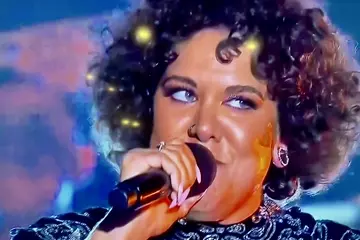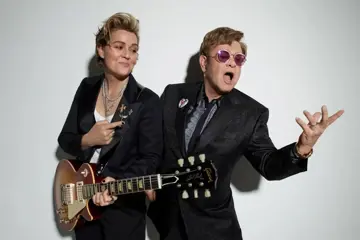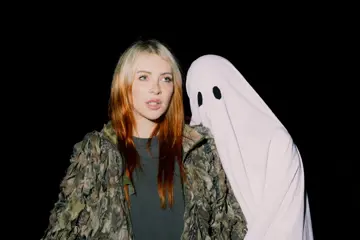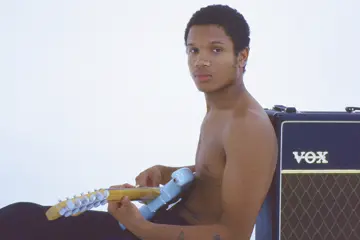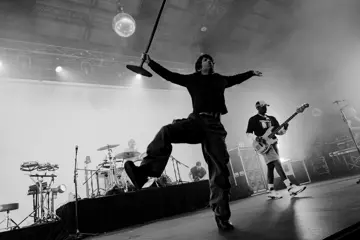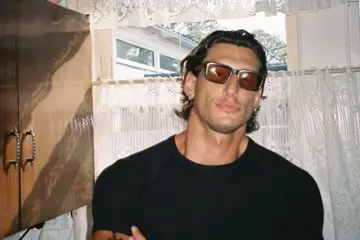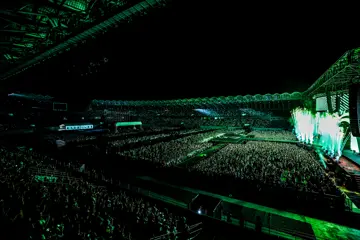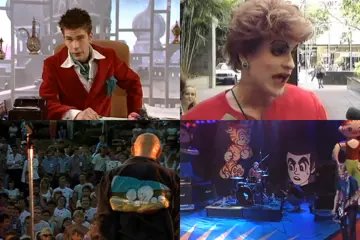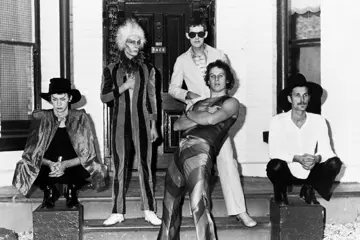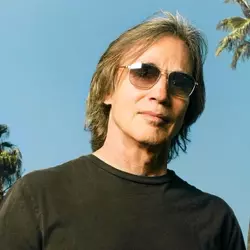 Jackson Browne
Jackson BrowneSome people just seem to have interesting lives, although a modicum of talent never goes astray. Jackson Browne was born in Germany just a few years after the cessation of WWII, the son of an American serviceman, but come the ‘60s, when he was a teenager discovering folk music, Browne found himself moving from LA to Greenwich Village in New York, just in time for that area’s incredible mid-‘60s folk explosion.
Before he knew it, he was backing artists like Tim Buckley and Nico (with whom he became romantically entangled), and soon he took things one step further by becoming a virtual gunslinger-for-hire in the songwriting stakes — his early material was recorded by acts such as The Eagles, Joan Baez, Linda Ronstadt, The Byrds and Greg Allman (to name but a few). Then, with the advent of the ‘70s, Browne started making his own records and shit really started to get real.
So much water has passed under the bridge in the intervening years that it’s impossible to do it justice here using even the broadest of strokes, suffice to say that even this far into his ridiculously interesting life Browne is still happily at the coalface doing what he does best: crafting timeless music which traverses both personal and political terrains with consummate ease. His newly released album, Standing In The Breach, is his fourteenth studio affair, and it straddles the past, present and future with an easy confidence befitting a writer and performer of Browne’s stature. He may be getting on in age but he’s still got plenty left to say, and plenty of vigour regarding how he’s going to say it.
“It sort of fell together, but the thing I’m probably happiest about is having the two guitar players both available,” Browne offers of Standing In The Breach. “We started by doing the first song The Birds Of St. Marks together and it just turned out that both Greg Leisz and Val McCallum were both available for the rest of the project so that turned out really well. We have all played together at one time or another, but this particular grouping has been really great.”
Don't miss a beat with our FREE daily newsletter
The album was constructed at Browne’s own Groove Masters Studio in Santa Monica, and it’s more the album’s lush sonics than the fact it’s been six years since his last record (2008’s Time The Conqueror) which suggests a painstaking genesis for the collection.
“Well, yeah, I did spend a lot of time,” he chuckles. “I record all of the time — I record whenever I want — so it’s really hard to give it a start date or to know when to call it an album, or whether some of the songs are done. It was done over a period of, I’d say, about a year-and-a-half. But one of the songs was recorded before that — the last song, Here, was recorded for a movie [2009’s Shrink] that came out a few years ago. The song was for a movie but I got rushed at the end when I was making that song, and didn’t think it was quite finished the way I wanted it to be so I got the chance to finish it and put it on my album. This film wasn’t a hit movie and not that many people have heard the song, so that was another reason to put it on the record.”
You’d have to imagine that having a world-class studio as a playground must be both a blessing and a curse, in that the clock is never ticking financially but the temptation must be present to just keep on working.
“I suppose that’s true — I never have a motivation to wrap things up,” Browne muses. “Eventually you do, because you want the availability to play the songs live. But it’s true — I’d probably just keep working on the thing and never put it out if it was left up to me. But, having said that, I spent a lot of time on this and took my time getting what I want out of it, some of that being a return to certain other record-making ideas — my early records I made by calling in certain players for specific songs, or trying people and seeing what I liked them on and re-cutting if I decided I wanted somebody else. Just drawing on a variety of players, and I did that again on this record — I played with about four different bass players and four different drummers on the record, but the whole thing is unified by the guitar players who were my first call in every case.
"Val McCallum was in my band for a while but I didn’t do a lot of recording with him — he was the guitar player on the song The Naked Ride Home [from 2002 album of same name], and actually so was Greg Liesz. That was the first time I got to play with Greg in the studio on The Naked Ride Home, and that was when I discovered that he actually played 12-string [guitar]. It suddenly dawned on me just recently that he could play on The Birds Of St. Marks, which I’d written a long time ago and had always thought that it should sound like The Byrds with 12-string and high harmonies and stuff, so I called him and asked if he wanted to get into that and he did. So it was so much fun and we just from that song to the next song and the next song.”

It seems somewhat incredible that a beautiful song like The Birds Of St. Marks — the new record’s opening gambit — has lain dormant in the recesses of Browne’s memory for so long.
“Well, I wrote the song when I was leaving New York in 1967,” he reflects. “I was eighteen and I was going back home having spent time in New York, and I wrote this for Nico, who I’d been working for. It was kind of a portrait for her in a way — it was a song to her, kind of a portrait or sketch, if you will — but when I played it acoustically on guitar, it just didn’t work for me. I began to think it wasn’t finished — every time I’d play it it just seemed that there was a stronger song around that sounded better by itself on guitar, so I lost track of the idea. When I wrote the song I was thinking about The Byrds and the way that they sounded, for the simple reason that Nico liked The Byrds. She loved Roger McGuinn’s guitar playing, and I can remember her on occasion asking if I could play like him, and I’d say, ‘No, I can’t’.
“But even when I eventually met The Byrds I didn’t even remember this song — I should have given this song to Roger McGuinn in about 1973 or ’74 because that’s when I met him (I’d met Crosby before, but he was out of the band by then and I was pitching for The Byrds to do my song). It would have been amazing, but by that time I’d forgotten about the song. Then I rediscovered it about twenty years later, and thought that it sounded much better with me playing the piano [he recorded a solo version on 2005’s Solo Acoustic, Vol 1], but I never lost the desire to record the song the way that I heard it, which was really apt for the portrait of Nico if it was The Byrds. So even along the way I’d plot and a couple of times I’d get Byrds into the studio individually — ideally I’d get them one by one without telling the others, so there would be Chris Hillman, David Crosby and Roger McGuinn all there at once and I’d pull away the veils and there they would be, The Byrds, and I’d get them to do my song. But, sadly, it doesn’t really work that way.
“I did get hold of Chris Hillman once and told him that they have to get back together. It was at this benefit that a bunch of people were doing [in 2000] — so many people were at this benefit, because it was to raise medical funds for a guitar store owner [Fred Walecki] who had been very dear to everybody, he’d owned a shop called Westwood Musical Instruments and he’d sold basically everybody their favourite instruments — and there were artists involved like Ry Cooder, Warren Zevon, Roger McGuinn, David Crosby… actually, McGuinn wasn’t even on the bill! Chris Hillman and David Crosby were on the bill and McGuinn heard about, and he just came along on the night and said, ‘What’s going on? Can I play?’ and suddenly we were hearing The Byrds play Turn! Turn! Turn!!
"I think that’s testament to my willingness to take ‘X amount’ of years — or however long it takes — to hear the thing I want to hear."
"The drummer that was in the house band was Ethan Johns — he played with everybody that evening — and I remember him looking over at me with this really stricken look on his face, going, ‘Oh shit! I’m in The Byrds!’ He had the most shocked expression, but they played so great! It sounded incredible, and I said to Hillman afterwards, ‘Why don’t you guys do this? Why don’t you reunite?’ And he said (adopts downcast voice), ‘Well, we talked about it but McGuinn won’t do it’. And I said, ‘Why?’ and Hillman said, ‘He said that he’d rather be in the army’. He would rather join the army than play with Crosby!
“Anyway, I finally realised that the only way to get this song the way I wanted was to do it and copy The Byrds, so when I remembered that Greg Leisz could not only play the 12-string but was one of the few people who can do it really well — there’s McGuinn of course, Mike Campbell [of The Heartbreakers] can, Peter Buck from REM can do it — I just got Greg to do it. Even then, it’s a lot to deal with, and even though Greg’s a great player I could only use some of his stuff because it’s so hard to keep the 12-string in tune. He’s like a guitar wrangler, best of his breed to play that part. But I think that’s testament to my willingness to take ‘X amount’ of years — or however long it takes — to hear the thing I want to hear. I never really lost sight of what I wanted it to sound like, and I never made a studio recording of it until now.”
It must be a great feeling to finally have a beautifully realised version of something that’s been in your head for so long?
“Oh yeah, there’s nothing like it, really,” Browne marvels. “There’s nothing like hearing something that you have imagined so long come into being. The only better feeling is if it turns out even better than you’d imagined it! I was thinking 12-string and The Byrds, but when I heard the notes coming out of Greg in the solo I was thinking, ‘This is so good! This is an even better melody than I was envisaging’. You think in general terms, but when it comes time to actually do it that’s when Greg Leisz is a real master because his choice of notes and everything is just so lovely.”
Funnily enough, despite being nearly 50 years old in one sense The Birds Of St. Marks isn’t even the oldest song on the album — the lyrics from You Know The Night adapted from an old Woody Guthrie letter to his wife which predates that song by decades.
“That’s right,” Browne chuckles. “The lyrics from that song were probably written in the ‘50s sometime — I’m not sure exactly when. I believe he met his wife sometime in the ‘40s, just after WWII. It was an amazing experience. I was approached by Rob Wasserman to put this song to music with him and put it on an album that came out about three years ago called Note Of Hope. It was a bunch of duets featuring people like Lou Reed and Tom Morello, and when we first did it the song was really long — I couldn’t work out how to get it to be less then fifteen minutes. That’s a long time for any song — especially a song that’s mainly words — but because they were autobiographical words I didn’t know how to take them out, I didn’t know how to abridge Woody Guthrie’s reminisces and thought it would be more valuable in its long form. Initially they went for keeping it long, but also asked me to do a shorter edit so it could be played on the radio (and it eventually ended up on the TV a couple of times).
“So we had to make it short, and in the actual necessity of cutting down I found a version that I like really well — I like what we wound up with a lot. This version is still about five or six minutes — about twice as long as you need for a single — so when I cut it down for radio I had to cut out the third verse, so when I realised that I could put that third verse back in and it could still have three verses and make sense, but couldn’t be cut down much more than that. With the fifteen-minute version I would defy anybody to listen to that without checking their watch at about eight-and-a-half minutes.”
Another of the new songs, Which Side, debuted at the Occupy Wall Street protests in Manhattan back in late-2011 — was the track written for that event specifically or was the timing just right?
“Well, I’d been writing it before that and it’s funny because I wrote the second verse the night before we played it at Occupy Wall Street,” the singer recounts. “I’d been trying to write it for a couple of months and we’d always play it at the end of another song — I Am A Patriot, the Little Stevie [Van Zandt] song — but I’d never really had to hear it as a standalone song, so when I approached it for this protest (and the resultant Occupy This Album project) I tried to fashion it like I wasn’t thinking of writing more. But it felt like a bit of a mis-step to finish this song and say that it’s about Occupy and trust that would explain everything that the song is about. I use the word ‘occupy’ in the lyrics, but I’m using it like shorthand for all of the movements — it’s like a catch-all phrase or an umbrella for all of the ideas that were being represented at Occupy. Finally thought that I’d better say exactly what I mean to describe those different sides – not that I go into any great depth about it. I was recently on Sirius satellite-radio station discussing this, and I said to the DJ, ‘I don’t think that anybody would stand there and say that they were standing on the side of corporate polluters’, and the guy doing the interview said, ‘Oh, there’s a lot of them here and they’ve got radio shows and they say it loud and proud that they’re on the side of the corporate polluters!’ So that’s what I’m doing with that song — just asking the listener which side they’re on. It’s a quick question that you ask yourself — I don’t have any stature or role in demanding to know what side people are on – but it’s a good thing to ask yourself.”
"More than empathy I’d say that I find a connection with [activist causes] and what I know needs to be done.”
Browne has been appearing at activist benefits and protests since the ‘70s — has he always had empathy for the planet and the causes which affect it?
“I identify with what people are doing, absolutely,” he stresses. “You say empathy as if empathy was a feeling that you have for someone else’s situation; maybe so, but I try to see a common cause with people who are working to save a forest or preserve old growth forests or trying to save the ocean. All of these things are inter-linked, and more than empathy I’d say that I find a connection with what they’re doing and what I know needs to be done.”
Earlier this year, a stellar group of friends and musicians came together to laud Browne with his own tribute album, Looking Into You: A Tribute To Jackson Browne. And we’re not talking local hacks; these are artists the calibre of Bruce Springsteen, Lucinda Williams, Lyle Lovett, JD Souther, Don Henley and Bonnie Raitt. Was that a humbling experience?
“It was, it was really incredible,” he concedes. “How I dealt with it was by not participating — I didn’t have anything to with the making of the record, except for having written all the songs. All of these friends of mine were doing it, and I kept hearing bits and pieces from people talking about it — some I didn’t even know were on it — but then when I heard it all at once (I heard it without having heard any of it despite knowing most of, but not all, the people involved) it was amazing. It was a great feeling to know that they were doing it at all, but nowhere nearly as great as when I got to listen to it and realised that something happened to these songs when they get to have great singers interpret them. I mean I love Bruce Hornsby’s version of I’m Alive — he brings it alive — and Shaun Colvin takes Call It A Loan somewhere else completely. It was a really interesting thing to have happen — I was proud of the songs, but if anything I thought, ‘Oh my God, these songs are so good, my next album better be able to meet this standard!’”

